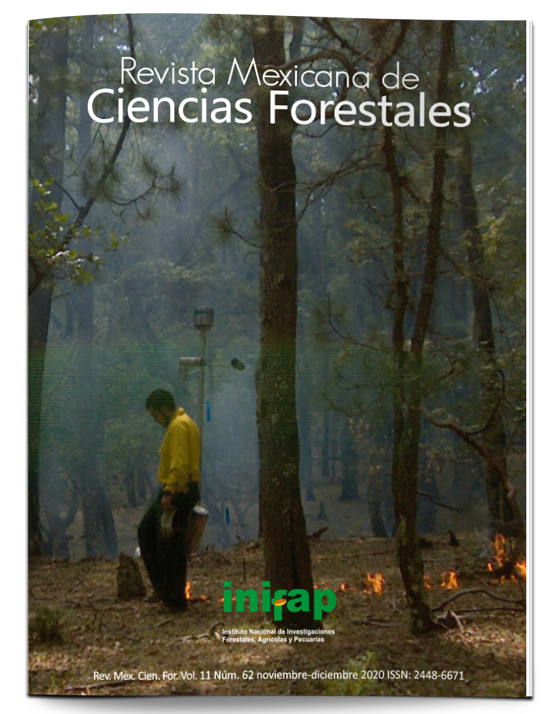Seedling quality from six Pinus species produced in polyethylene bag
DOI:
https://doi.org/10.29298/rmcf.v11i62.809Keywords:
Morphological attributes, increased survival, Probosque, nursery plant production, reforestation, forest restorationAbstract
The restorers of degraded areas require high quality plants, with ideal morphological attributes to be able to establish successfully in the plantation sites, even if the site conditions are adverse. In order to know the plant quality of six pine species that will be used for reforestation and restoration of forest lands in the state of México, five morphological attributes based on the Mexican Norm NMX-AA-170-SCFI-2016 and a paper were assessed. At the Héroes Bicentenario Forest Nursery of Tecámac, seedling’s basal diameter (at the root neck (DC)), height, from the base to the apical bud (Alt), slenderness index (IE = Alt/DC), aerial dry biomass and dry root biomass ratio (BSA/BSR) and Dickson's quality index (ICD) were determined. For DC, the results showed that all species except for Pinus ayacahuite, had high quality. In Alt, P. greggii and P. leiophylla had the best quality; while in IE, all the species except for P. greggii, showed high quality. For the BSA/BSR ratio, P. cembroides, P. ayacahuite and P. hartwegii were the best, and for ICD, P. hartwegii had the highest quality value. Considering all the morphological indicators together, it was concluded that P. cembroides and P. greggii had the best plant quality. This information is crucial to analyze the seedling’s survival in the field and make timely decisions in land restoration management.
Downloads
Published
How to Cite
Issue
Section
License
The authors who publish in Revista Mexicana de Ciencias Forestales accept the following conditions:
In accordance with copyright laws, Revista Mexicana de Ciencias Forestales recognizes and respects the authors’ moral right and ownership of property rights which will be transferred to the journal for dissemination in open access.
All the texts published by Revista Mexicana de Ciencias Forestales –with no exception– are distributed under a Creative Commons License Attribution-NonCommercial 4.0 International (CC BY-NC 4.0), which allows third parties to use the publication as long as the work’s authorship and its first publication in this journal are mentioned
The author(s) can enter into independent and additional contractual agreements for the nonexclusive distribution of the version of the article published in Revista Mexicana de Ciencias Forestales (for example, include it into an institutional repository or publish it in a book) as long as it is clearly and explicitly indicated that the work was published for the first time in Revista Mexicana de Ciencias Forestales.
For all the above, the authors shall send the form of Letter-transfer of Property Rights for the first publication duly filled in and signed by the author(s). This form must be sent as a PDF file to: ciencia.forestal2@inifap.gob.mx
This work is licensed under a Creative Commons Attribution-Noncommercial 4.0 International license.






